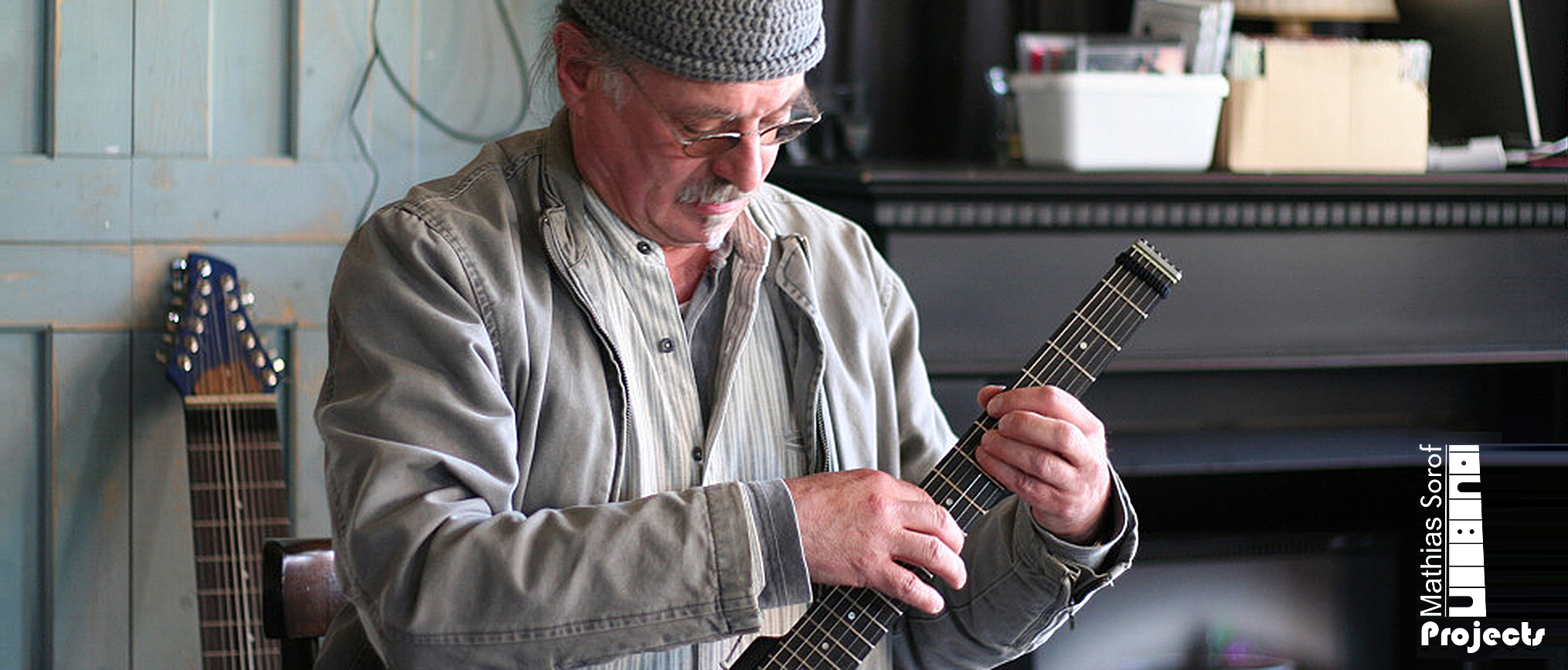The concept “Tap guitar” or “Tapping guitar” describes a variety on the guitar which is in principle different from the traditional way of playing with the dividing in handle hand and stop hand.
“Tapping” means that the strings are beaten with the fingers on the fingerboard. The strings are held after they were beaten down. So a new possibility to build a tone which is established in the guitar world, however, hasn’t gained acceptance long ago yet arises. Every hand is tapping stop hand and handle hand at the same time.
This manner to build a tone on guitar is nothing new. So the hammer-on and pull-off-technique are the left hand’s integral part the flamenco stylistics, for example. The legato-technique in the classical literature follows the same principle. On the whole only briefly reconciles examples.
For long time this principle of the tone-building was rather seldom used on acoustic instrument, because the tone is too quiet and no great dynamics is possible. But this changed with the upcoming air tapping maybe 10 years ago. The air tapping is mainly realized on guitars with one tunings, which provides to create very musical percussive sounds on compositions.
Jon Gomm, Justin King, Preston Reed are well-known protagonists of this approach.
The acoustic guitar’s lacking prerequisites changed by the invention of the E guitar. The elektro acoustic tone-building gave enough energy now, a sensationally bigger dynamics, so that “tapping” as a logical further development of the new possibilities should be found quickly.
Jimmie Webster from the U.S.A. is regarded as an of the first discoverer of Tapping till now, initiated by Harry deArmont. He published his “Tapping method” for the 6-string guitar and also a record in 1952.
In 1974 Emmett Chapman from the U.S.A. has given a very guiding influence to the tapping technique with the invention of the Stick and his idea to put the fingers in a perpendicular position to the strings, parallel to the frets. He has created this two-handed tapping technique with perpendicular hands on a 9-sring guitar in 1969. He oriented the fingers of his right hand perpendicular to the neck and strings, where as the left hand was already perpendicular as per the guitarist´s fingering hand. His hands approached the fretboard from opposit sides, the hands thus being oriented parallel to each other. With this position it became better, to get a relaxed posture and a free mind for the tapping. This technique allows fingering in each hand independently, where the line of attack of all fingertips is across successive frets on any single string. Chapman was the first,who played this way. He brought it to completion as a dedicated playing method and began teaching it to guitarists an bass-players. This idea don´t depends only to the stick, it is the principal idea to get a good tapping-technique and musical success anyway. He published this idea in his method-book: Emmett Chapman “Free Hands – A New Discipline of Fingers on Strings”, Los Angeles, 1974
Mathias Sorof started with its consistent work without example in 1978, initiated by its idea and by intuition.
The to this day relevant main emphases of the Tapping method are:
1. The Two-Hand-Solo-Tapping: Scales and arpeggios are played with both hands as single note lines in the coordinate interaction. This makes an astonishing virtuosity possible.
2. The polyphonic symmetry: Melody leaderships with equal rights pursue a left and right hand (Counterpoint).
3. The homophonic symmetry: Play a left and right hand for different material. Example: the right hand plays rhythmic chords– the left hand plays a melody
Besides the development of the Sorof tuning method since 1980 Sorof continued its Tapping development in addition for the 6-saitige. Sorof kept the classic guitar-tuning
(E, A ,d ,g, h , e`) unlike some colleagues. The following hearing examples are composed for this tuning.
There is the possibility soon of ordering compositions for Tapping guitars as notes in this place. For this the publication of a score is planned with easy études of medium difficulty for the 6-saitige guitar with classical tuning.

last comments